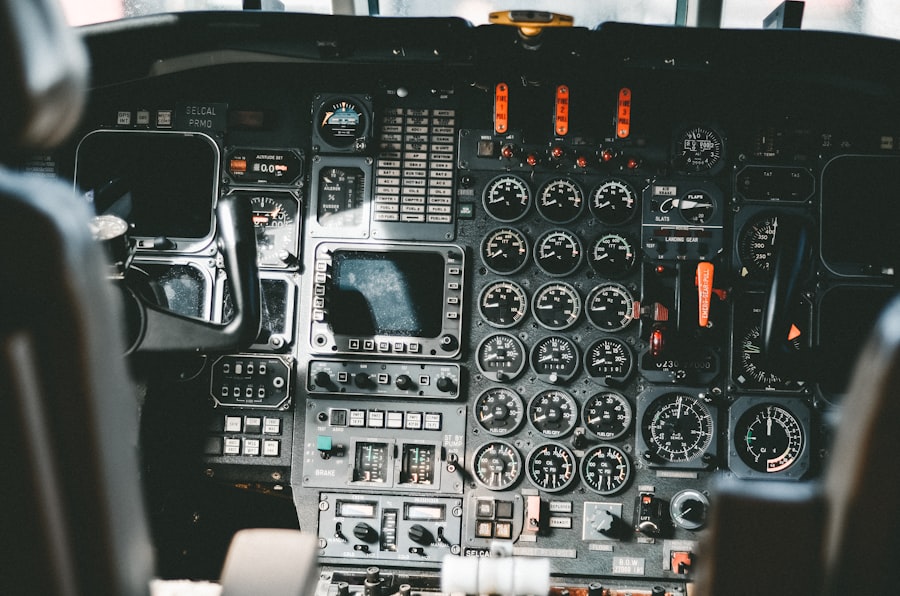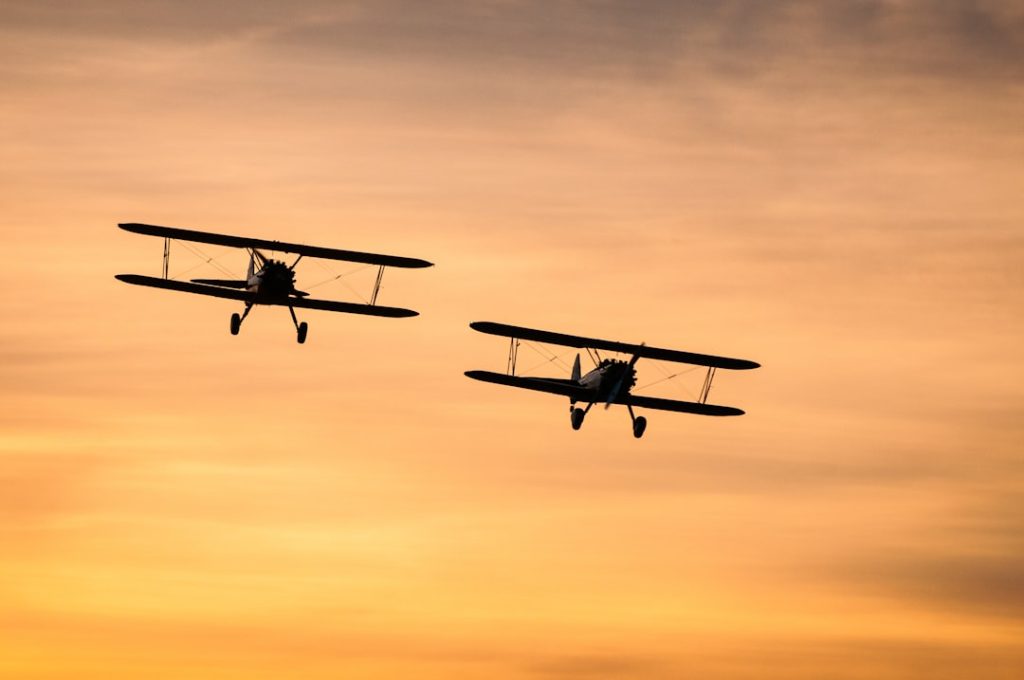The landscape of aviation has undergone a remarkable transformation over the past few decades, driven by rapid advancements in technology. From the introduction of jet engines to the development of sophisticated navigation systems, the evolution of flight technology has not only enhanced the efficiency and safety of air travel but has also opened new frontiers in aerospace exploration. As we stand on the brink of a new era in aviation, it is essential to explore the various innovations that are shaping the future of flight.
These advancements are not merely incremental improvements; they represent a paradigm shift in how we conceive, design, and operate aircraft. The convergence of various technological domains—such as artificial intelligence, materials science, and environmental sustainability—has catalyzed a wave of innovations that promise to redefine the aviation industry. The integration of electric propulsion systems, the rise of unmanned aerial vehicles (UAVs), and the exploration of sustainable aviation fuels are just a few examples of how technology is reshaping air travel.
As we delve deeper into these advancements, it becomes clear that the future of aviation is not only about faster and more efficient aircraft but also about creating a more sustainable and accessible air travel experience for all.
Key Takeaways
- Electric and hybrid aircraft are on the rise, offering a more sustainable and efficient alternative to traditional fuel-powered planes.
- Artificial intelligence is revolutionizing aviation, from improving safety and efficiency to enhancing pilot training and decision-making processes.
- Sustainable aviation fuel is playing a crucial role in reducing the environmental impact of air travel and shaping the future of flight.
- Advancements in aircraft design and materials are leading to more aerodynamic, fuel-efficient, and environmentally friendly planes.
- The integration of unmanned aerial vehicles (UAVs) in aviation is transforming the industry, with applications ranging from surveillance and cargo delivery to passenger transportation.
The Rise of Electric and Hybrid Aircraft
Electric and hybrid aircraft represent one of the most significant shifts in aviation technology in recent years. With growing concerns over carbon emissions and climate change, the aviation industry is increasingly turning to electric propulsion as a viable alternative to traditional fossil fuel-powered engines. Companies like Airbus and Boeing are investing heavily in research and development to create aircraft that utilize electric motors, batteries, and hybrid systems to reduce their environmental impact.
For instance, the Airbus E-Fan project was one of the first attempts to develop a fully electric aircraft capable of flight, showcasing the potential for electric propulsion in commercial aviation. Hybrid aircraft, which combine conventional engines with electric propulsion systems, offer a transitional solution that can significantly reduce fuel consumption and emissions. The Pipistrel Alpha Electro is an example of a light aircraft that uses electric propulsion for training purposes, demonstrating how electric technology can be applied in smaller aircraft before scaling up to larger commercial models.
Furthermore, major airlines are exploring hybrid solutions for regional flights, where shorter distances make electric flight more feasible. The development of these technologies not only addresses environmental concerns but also promises to lower operational costs for airlines, making air travel more economically viable.
The Impact of Artificial Intelligence on Aviation

Artificial intelligence (AI) is revolutionizing various sectors, and aviation is no exception. AI technologies are being integrated into multiple facets of aviation operations, from flight planning and air traffic control to predictive maintenance and passenger services. One notable application is in flight operations management, where AI algorithms analyze vast amounts of data to optimize flight routes, reduce fuel consumption, and enhance safety.
For example, airlines are using AI-driven systems to predict weather patterns and adjust flight paths accordingly, minimizing delays and improving overall efficiency. Moreover, AI is playing a crucial role in enhancing safety through predictive maintenance. By analyzing data from aircraft sensors, AI can identify potential mechanical issues before they become critical, allowing for timely repairs and reducing the risk of in-flight failures.
This proactive approach not only enhances safety but also minimizes downtime for aircraft, leading to increased operational efficiency. Additionally, AI-powered chatbots and virtual assistants are transforming customer service in aviation by providing passengers with real-time information about flights, baggage tracking, and other inquiries, thereby improving the overall travel experience.
The Role of Sustainable Aviation Fuel in the Future of Flight
| Metrics | Data |
|---|---|
| Reduction in CO2 emissions | Up to 80% compared to conventional jet fuel |
| Feedstock sources | Used cooking oil, agricultural residues, algae, etc. |
| Current production capacity | Estimated at 6 million gallons per year |
| Cost competitiveness | Expected to reach parity with conventional jet fuel by 2030 |
| Regulatory support | Various countries have implemented policies to support sustainable aviation fuel |
Sustainable aviation fuel (SAF) is emerging as a cornerstone in the quest for greener air travel. Unlike traditional jet fuels derived from fossil sources, SAF is produced from renewable resources such as plant materials, waste oils, and even carbon captured from the atmosphere. The use of SAF can significantly reduce greenhouse gas emissions—by up to 80% over its lifecycle—making it an attractive option for airlines looking to meet stringent environmental regulations and corporate sustainability goals.
Major airlines like United Airlines and KLM have already begun incorporating SAF into their operations, signaling a shift towards more sustainable practices within the industry. The production and adoption of SAF face several challenges, including scalability and cost-effectiveness. Currently, SAF is produced in limited quantities compared to conventional jet fuel, which can lead to higher prices.
However, ongoing research and investment in production technologies aim to increase supply and drive down costs. Governments around the world are also incentivizing the development of SAF through subsidies and grants, recognizing its potential to decarbonize aviation. As more airlines commit to using SAF as part of their fuel mix, it is likely that we will see a significant shift towards sustainable practices in air travel over the coming years.
Advancements in Aircraft Design and Materials
The design and materials used in aircraft construction have evolved dramatically due to advancements in technology and engineering practices. Modern aircraft are increasingly being built with lightweight composite materials such as carbon fiber reinforced polymer (CFRP), which offer superior strength-to-weight ratios compared to traditional aluminum structures. This shift not only enhances fuel efficiency by reducing overall weight but also improves performance characteristics such as speed and maneuverability.
The Boeing 787 Dreamliner is a prime example of this trend; approximately 50% of its airframe is made from composite materials, resulting in significant fuel savings. In addition to materials innovation, advancements in aerodynamics are leading to more efficient aircraft designs. Engineers are employing computational fluid dynamics (CFD) simulations to optimize wing shapes and fuselage designs for reduced drag during flight.
The introduction of winglets—small vertical extensions at the tips of wings—has become commonplace as they help minimize vortex drag and improve fuel efficiency. Furthermore, concepts like blended wing body designs are being explored for future aircraft that could further enhance aerodynamic efficiency while providing more cabin space for passengers.
The Integration of Unmanned Aerial Vehicles (UAVs) in Aviation

Unmanned Aerial Vehicles (UAVs), commonly known as drones, have rapidly gained traction across various sectors, including agriculture, logistics, surveillance, and even passenger transport. The integration of UAVs into the aviation ecosystem presents both opportunities and challenges. On one hand, drones can perform tasks that are dangerous or impractical for manned aircraft, such as inspecting infrastructure or delivering medical supplies to remote areas.
Companies like Zipline have successfully utilized drones for medical deliveries in hard-to-reach regions, demonstrating their potential to save lives. However, the widespread adoption of UAVs also raises regulatory and safety concerns. Air traffic management systems must evolve to accommodate an increasing number of drones operating alongside traditional aircraft.
This necessitates the development of robust frameworks for airspace integration that ensure safety while allowing for innovation. Organizations like the Federal Aviation Administration (FAA) are actively working on regulations that govern UAV operations while promoting research into technologies such as detect-and-avoid systems that enhance safety during drone flights.
The Future of Supersonic and Hypersonic Flight
Supersonic flight has long captured the imagination of aviation enthusiasts and travelers alike. The Concorde was a pioneering example of supersonic passenger travel; however, its retirement in 2003 left a void in this niche market due to high operational costs and noise regulations. Recently, several companies have emerged with ambitious plans to revive supersonic travel using advanced technologies that promise quieter operations and improved fuel efficiency.
Boom Supersonic’s Overture aims to carry passengers at speeds exceeding Mach 1 while addressing noise concerns through innovative design features such as engine placement and aerodynamic shaping. Hypersonic flight—defined as speeds greater than Mach 5—represents an even more ambitious frontier in aviation technology. While primarily focused on military applications thus far, hypersonic technology holds potential for commercial travel as well.
Companies like Hermeus are developing hypersonic jets that could drastically reduce travel times across long distances; for instance, a flight from New York to London could take less than an hour. However, significant technical challenges remain regarding materials capable of withstanding extreme temperatures generated during hypersonic flight and ensuring passenger safety at such high speeds.
The Potential of Space Tourism and Commercial Space Travel
The concept of space tourism has transitioned from science fiction to reality with recent advancements in spaceflight technology. Companies like SpaceX, Blue Origin, and Virgin Galactic are pioneering efforts to make space accessible to private individuals willing to pay for the experience. Suborbital flights offered by Virgin Galactic allow passengers to experience a few minutes of weightlessness before returning to Earth—a tantalizing prospect for adventure seekers.
Meanwhile, SpaceX’s Crew Dragon spacecraft has successfully transported private astronauts to the International Space Station (ISS), paving the way for future commercial missions. The implications of commercial space travel extend beyond mere tourism; they encompass scientific research, satellite deployment, and even potential colonization efforts on other celestial bodies. As technology continues to advance and costs decrease, we may witness an era where space travel becomes more commonplace for not just wealthy individuals but also researchers and students seeking unique educational experiences beyond our planet’s atmosphere.
The burgeoning field of space tourism represents a new frontier that could redefine humanity’s relationship with space exploration while inspiring future generations to reach for the stars.


